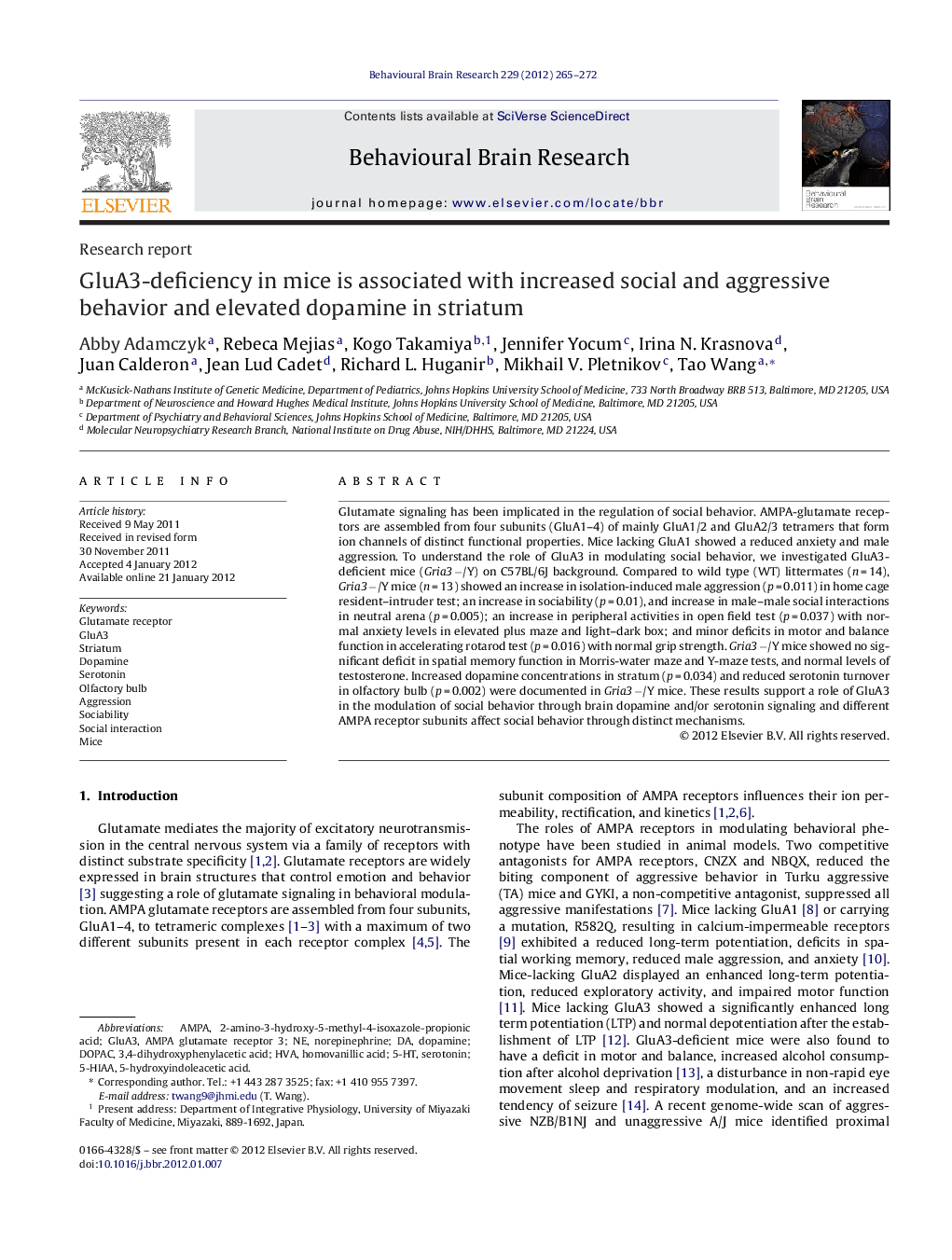| Article ID | Journal | Published Year | Pages | File Type |
|---|---|---|---|---|
| 4313371 | Behavioural Brain Research | 2012 | 8 Pages |
Glutamate signaling has been implicated in the regulation of social behavior. AMPA-glutamate receptors are assembled from four subunits (GluA1–4) of mainly GluA1/2 and GluA2/3 tetramers that form ion channels of distinct functional properties. Mice lacking GluA1 showed a reduced anxiety and male aggression. To understand the role of GluA3 in modulating social behavior, we investigated GluA3-deficient mice (Gria3 −/Y) on C57BL/6J background. Compared to wild type (WT) littermates (n = 14), Gria3 −/Y mice (n = 13) showed an increase in isolation-induced male aggression (p = 0.011) in home cage resident–intruder test; an increase in sociability (p = 0.01), and increase in male–male social interactions in neutral arena (p = 0.005); an increase in peripheral activities in open field test (p = 0.037) with normal anxiety levels in elevated plus maze and light–dark box; and minor deficits in motor and balance function in accelerating rotarod test (p = 0.016) with normal grip strength. Gria3 −/Y mice showed no significant deficit in spatial memory function in Morris-water maze and Y-maze tests, and normal levels of testosterone. Increased dopamine concentrations in stratum (p = 0.034) and reduced serotonin turnover in olfactory bulb (p = 0.002) were documented in Gria3 −/Y mice. These results support a role of GluA3 in the modulation of social behavior through brain dopamine and/or serotonin signaling and different AMPA receptor subunits affect social behavior through distinct mechanisms.
► Behavioral phenotype of GluA3-deficient mice was studied. ► Increased social and aggressive behavior was observed. ► Elevated dopamine levels were found in striatum. ► A role of GluA3 in modulating social behavior is implicated.
